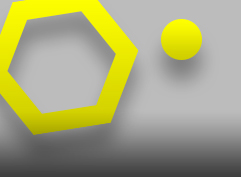Nanotechnology brings a lot to the medical field, and a specific branch known as nanomedicine has evolved because of the growing interest in this area.
Drug delivery systems derived from materials (or particles) at the nano-level provide a way for drugs, that might otherwise be toxic to the body, to reach their intended target through encapsulation or conjugation approaches. There are some issues which need to be ironed out, with respect to the size of some of these carriers against the regulatory definitions, but it is an area that is expanding drug delivery approaches beyond what was previously possible with conventional approaches.
Inorganic Nanocarriers
Inorganic nanocarriers were the first type of nanotechnology-based drug delivery system to be trialled, yet their use and research is becoming less and less frequent. Many types of inorganic nanoparticle have been tried and tested, from gold, to iron oxide, to calcium phosphate, and beyond. Many inorganic nanoparticles are not biocompatible within the body, however, this can be overcome by functionalising the surface with organic molecules, such as PEG, to increase their compatibility within the body. However, where this area has been let down is in their inability to be easily broken down after use and the subsequent difficulty to be excreted.
Organic Nanocarriers
Organic-based nanocarriers are the fastest growing area of nano-inspired drug delivery systems, and the reason for this expansion is due to the (often) inability of inorganic drug carriers to be broken down within the body and excreted. By comparison, the organic make-up of organic carriers, such as those made of certain types of polymers, dendrimer architectures and lipid-based encapsulating vessels (liposomes), can be broken down and excreted and offer a much greater degree of biocompatibility.
Each mechanism of delivery is different for these systems. For example, dendrimer-based delivery vessels will often have the drug covalently linked (conjugated) to the dendrimer backbone itself, and when it reaches a target of interest, certain functional groups at the edges will bind to the target and release the drug through molecular cleavage. However, the most common way of delivering drugs is through encapsulation, as the toxicity (and the possibility of the drug interacting with the body before it reaches the target) is significantly reduced. By using this approach, the nanocarrier can uptake the drug of interest into its core, where it is only released once the nanocarrier has reached the target of interest—thus lowering the risk of the drug being cleaved and released on route to the target site.
Solid Drug Nanoparticles
Solid drug nanoparticles are another growing nanotechnology-inspired drug delivery system, but their use is not (yet) as widespread as organic delivery vessels. However, they do avoid some of the regulatory complications, as their use does not involve any extra species other than already approved drugs in an efficient nanoparticle form.
Solid drug nanoparticles are the nanoparticle form of a conventional drug; and take the form of being packed into a template, or as a suspension—therefore no delivery system is required and are administered by injection. The drug nanoparticles are often created through a bottom-up controlled precipitation of the drug to be administered, or by a top-down grinding approach of larger pieces of the drug until they are in the nanoparticle size range.
Aside from providing a more straightforward route to the clinic from a regulatory perspective, they also offer a way to tackle drug adherence issues—i.e. where people don’t take their required medication on time, which causes the effectiveness of the drug to be reduced—by providing a long-lasting, slow release of the drug over a period of 1 to 6 months.
Source: nano-magazine.com, by Liam Critchley



 NanoTrade
NanoTrade
 Clean areas
Clean areas
 Energy
Energy
 Functional wear
Functional wear
 Material upgrading
Material upgrading
 Health, veterinary,
Health, veterinary,  Technology
Technology
 Projects VaV
Projects VaV